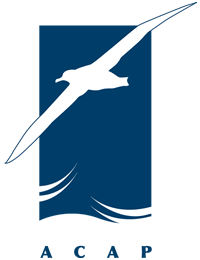Expert training in spatial data analysis to assess the impact of fisheries on the behaviour of threatened seabirds in the Argentine-Uruguayan Common Fishing Zone
Secondee/Applicant: Jesica Andrea Paz, Instituto de Investigaciones Marinas y Costeras (IIMYC, Facultad de Ciencias Exactas y Naturales, Universidad Nacional de Mar del Plata - Consejo Nacional de Investigaciones Científicas y Técnicas), Argentina.
Amount awarded: AUD 18,867
Host Institution: BirdLife International Marine Programme and British Antarctic Survey, United Kingdom.
Since 1973, the Treaty of the Río de la Plata and its Maritime Front outlines the foundations for cooperation between Argentina and Uruguay, establishing the Joint Technical Commission for the Maritime Front (JTCMF). The Treaty also defines and sets the boundaries of the Argentine-Uruguayan Common Fishing Zone (ZCP), where both coastal and high-seas fleets operate, encompassing the waters along the outer maritime front of the Río de la Plata. To support the conservation and sustainable exploitation of commercial species, seasonal closed areas are established every year within the ZCP. Previous studies have shown that closed areas can affect population trends, foraging behaviour, and the reproductive biology of certain seabird species. The high concentration of vessels, (e.g., those near the edges of closed areas) provides a source of food that attracts various seabird species, increasing the risk of interactions and incidental mortality. There are currently three plans of action in place focused on reducing the interactions of seabirds with fisheries in the region: the National Plans of Action to Reduce the Interaction of Seabirds with Fisheries in Argentina (NPOA-Argentina) and Uruguay (NPOA-Uruguay), and the Regional Plan of Action in the Area Covered by the Treaty of the Río de la Plata and its Maritime Front (RPOA-Seabirds).
This Secondment aims to contribute to the implementation of NPOAs and RPOAs by providing information on the aerial extent of seabirds and the factors influencing interactions with vessels. This will be achieved following expert training in spatial data analysis at BirdLife International Marine Programme and the British Antarctic Survey. The Secondment will also benefit from access to BirdLife International's Seabird Tracking Database.
Specific objectives:
- Build expertise in the use of tools and new techniques in spatial statistics and modelling, fostering collaboration with scientists from other ACAP Parties.
- Determine the effect of spatially explicit fisheries management measures in the ZCP on the distribution, behaviour and interaction of seabirds with commercial fishing vessels, in collaboration with the JTCMF and Uruguayan colleagues.
- Create inputs for national and regional fisheries management organisations to help them better understand the dynamics of interactions, and develop fisheries management and bycatch mitigation practices as part of current plans of action.

 English
English  Français
Français  Español
Español